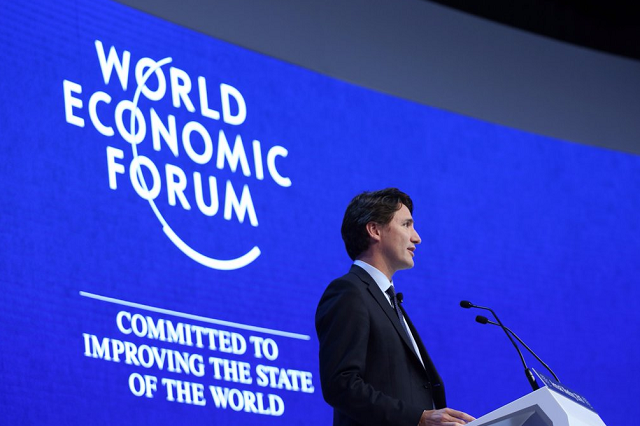Combatting climate change in the Asia–Pacific: lessons from the Marshall Plan
 Despite international crises in Europe and the Middle East, the US remains a Pacific nation and is committed to a greater strategic emphasis on the Asia–Pacific region. But in order for this ‘rebalance’policy to translate into lasting influence, the US needs a comprehensive diplomatic, defense and development agenda to prepare for key emerging threats—including climate change, which has been recognised as an ever-present existential threat that multiplies the region’s existing vulnerabilities (PDF).
Despite international crises in Europe and the Middle East, the US remains a Pacific nation and is committed to a greater strategic emphasis on the Asia–Pacific region. But in order for this ‘rebalance’policy to translate into lasting influence, the US needs a comprehensive diplomatic, defense and development agenda to prepare for key emerging threats—including climate change, which has been recognised as an ever-present existential threat that multiplies the region’s existing vulnerabilities (PDF).
In 1949, the US decided that its national security depended on the maintenance of a strong alliance with its European compatriots. The Marshall Plan, a US$13 billion package of conditional assistance, was a critical step in that process designed to maintain a Europe stable and secure enough to resist Soviet aggression. By effectively connecting economic and development assistance to Europe with diplomatic and security objectives, the Marshall Plan quickly elevated Western Europe from devastated to developed. It helped to lay the groundwork for the European Union and the North Atlantic Treaty Organization.
Such a broadly-successful plan can provide lessons for a new US strategy in the Asia–Pacific—a region grappling with population pressures, climate change and the challenge of a rising China.
In concert with other initiatives, meeting the region’s climate needs through a Climate Security Plan could enhance regional stability, build goodwill, enhance US cooperation with nations on humanitarian and disaster relief and serve as a non-threatening way of competing with China for regional influence. There are existing programs, funds, strategies and structures that can form a foundation for such a plan. Scaling-up investment and enhancing coordination across the traditionally-distinct silos of defence, diplomacy and development are at the heart of such an approach.
In terms of defence, the US military can help maintain stability in climate-vulnerable nations in the Asia–Pacific region, through both military–military and civilian–military engagement on climate preparedness. Some of this engagement is already happening, including mil–mil cooperation on disaster risk reduction with partner nations such as Malaysia; large-scale joint exercises such as Pacific Angel; regional security dialogues on climate change and security at the ASEAN Defense Ministers Meeting; and military-led diplomacy through the Pacific Outreach Directorate of US Pacific Command. The US can do much to build resilience in the region by expanding programs led by US PACOM, including ensuring that the Department of Defense broadens its strategic guidance to US PACOM to allow for broader integration of climate change risks into its deliberate and contingency planning processes, strategic analyses, joint exercises and cooperative security programs. This would give US PACOM the space to coordinate with its counterparts in the diplomatic and development agencies to address climate change as a strategic security risk in its Area of Responsibility.
In terms of diplomatic action, enhancing cooperation with allied, partner, and prospective partner nations on addressing climate-related threats will be critical. Again, the US won’t be starting from scratch. In 2013, the US supported the Majuro Declaration at the Pacific Islands Forum, which called on countries to create a fund to address climate risks in Pacific islands. In 2014, the US concluded a historic deal on climate change with China. However, a much greater emphasis on bilateral and multi-lateral partnerships for addressing climate change in the region is needed. With US backing, APEC may have room to expand its mandate into climate change adaptation. In 2012, the US launched a high-level engagement process in the region that included ‘coping with climate change, and rising sea levels,’ which can be built upon. Lastly, more expansive US support for climate-sensitive DRR in the region could have benefits that go well beyond the often short-lived diplomatic benefits of successful disaster response efforts.
Development support, including increases in financing for climate change adaptation, will also be of critical importance. Until now, such financing has been minuscule relative to the threat. That could be problematic as the US seeks to broaden its partnerships in the region beyond its traditional allies, including with strategically significant and extremely climate-vulnerable countries such as Vietnam and Indonesia. While recent US commitments—like its US$3 billion pledge to the Green Climate Fund, USAID’s ADAPT Asia–Pacific program and the Lower Mekong Initiative—will help in this regard, it may not be enough, especially given China’s recent announcement of an alternative ‘South-South’ climate fund. Some low-hanging fruit includes renewal and expansion of the five-year Pacific–American Climate Fund and a broadening of the mandate and scope of the Global Security Contingency Fund to include strategic climate investments to key allied partners and nations in the region.
Conditions have changed since the Marshall Plan was implemented and there are many ways in which modern investment programs and strategic engagement strategies are different. However, the key positive lessons of the Marshall Plan are relevant today.
If the US wants to be successful in the Asia–Pacific, it’ll need to invest in combating the region’s climate change ills (PDF). Such a policy will shore up and sustain US leadership in both the Asia–Pacific and the world. Failing to play such a leadership role may ultimately result in other nations either assuming that leadership mantle, or being left unable to prevent and respond to instability and conflict. The US can nurture its capacity and role in the region if it so chooses to seize the opportunity to lead on climate security.









